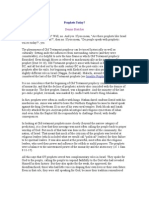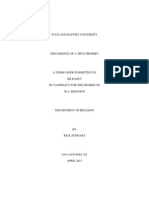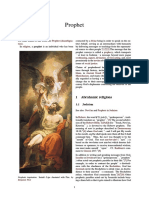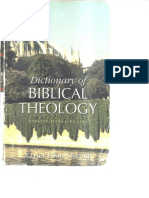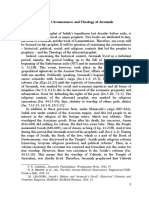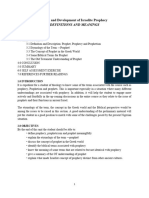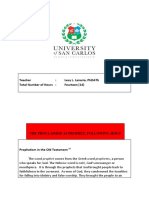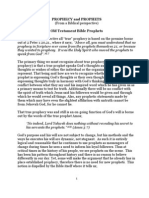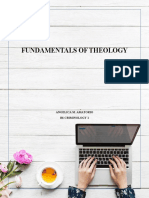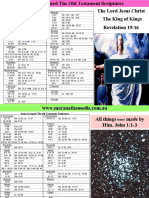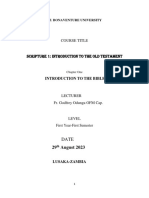0% found this document useful (0 votes)
21 views10 pagesChapter Two
Chapter Two of the document provides a literature review on the prophetic dimension of religious life, exploring its biblical, theological, and historical contexts. It emphasizes the role of prophets as messengers of God, advocates for justice, and mediators between God and humanity, with a focus on Jeremiah's call as a model for understanding prophetic vocation. The chapter also highlights contemporary theological perspectives on prophecy and its implications for religious communities today.
Uploaded by
Muogbo Zimife MichaelCopyright
© © All Rights Reserved
We take content rights seriously. If you suspect this is your content, claim it here.
Available Formats
Download as DOCX, PDF, TXT or read online on Scribd
0% found this document useful (0 votes)
21 views10 pagesChapter Two
Chapter Two of the document provides a literature review on the prophetic dimension of religious life, exploring its biblical, theological, and historical contexts. It emphasizes the role of prophets as messengers of God, advocates for justice, and mediators between God and humanity, with a focus on Jeremiah's call as a model for understanding prophetic vocation. The chapter also highlights contemporary theological perspectives on prophecy and its implications for religious communities today.
Uploaded by
Muogbo Zimife MichaelCopyright
© © All Rights Reserved
We take content rights seriously. If you suspect this is your content, claim it here.
Available Formats
Download as DOCX, PDF, TXT or read online on Scribd
/ 10

